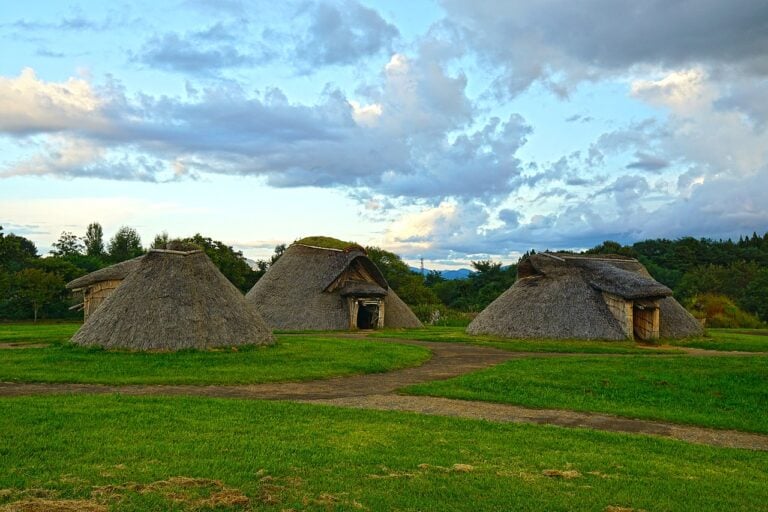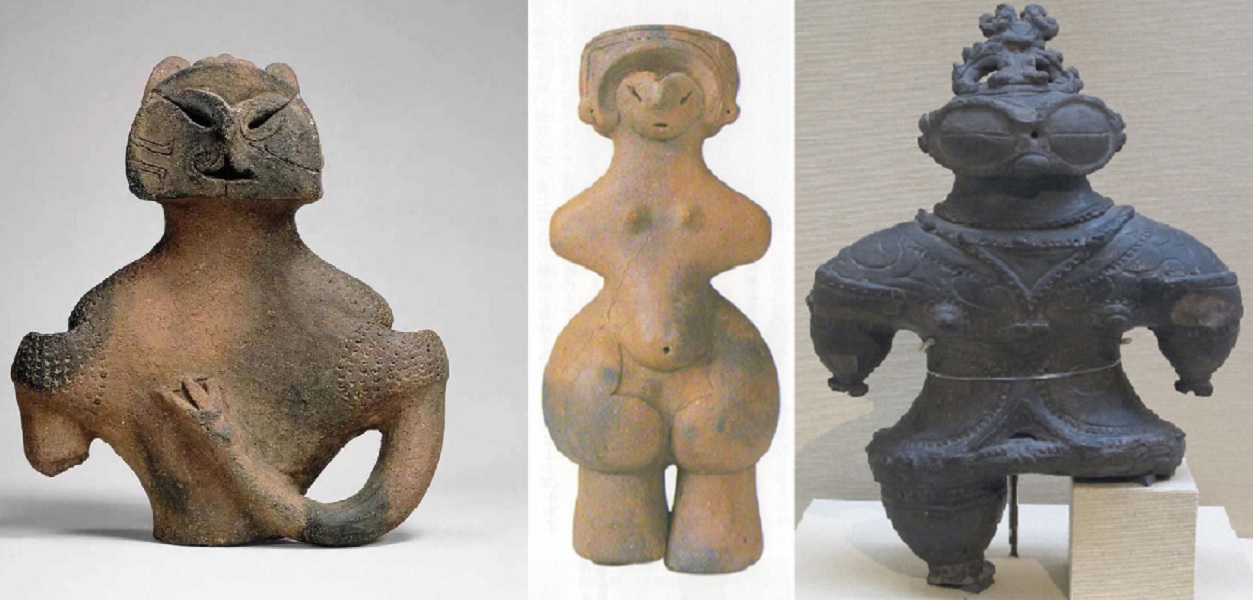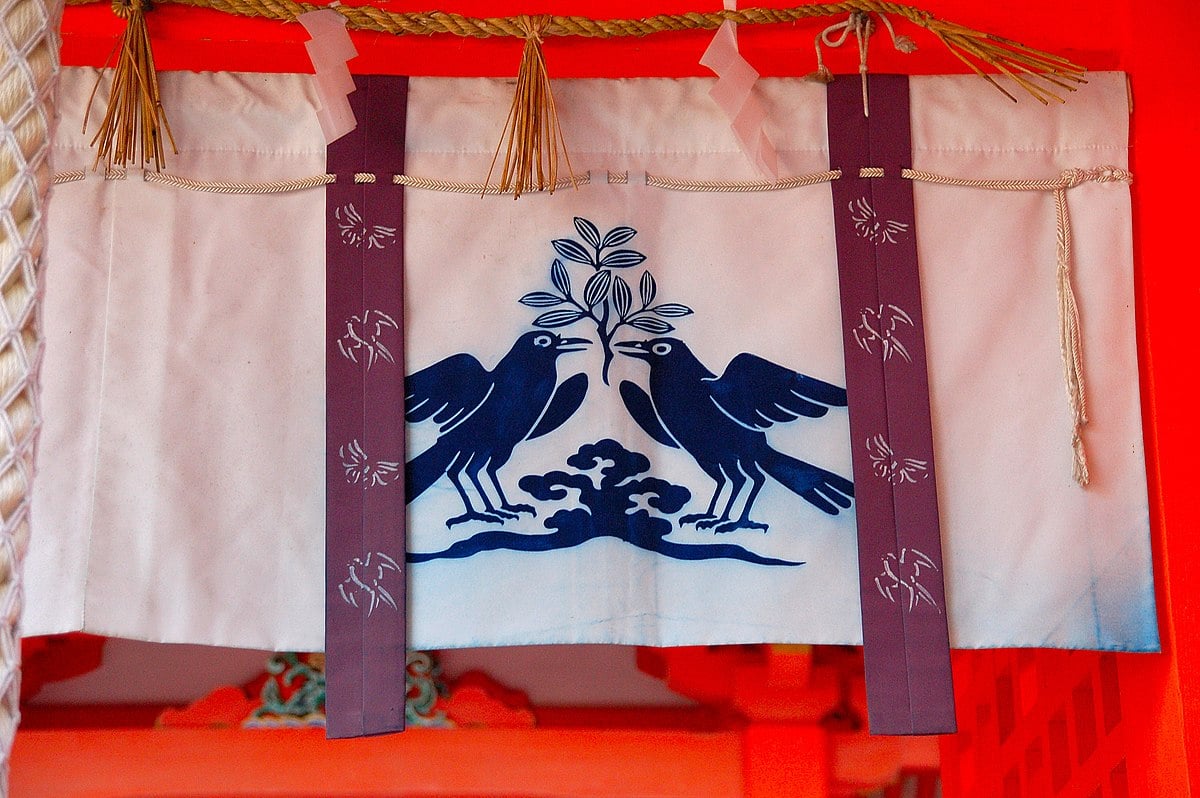
Sometimes, when you walk around Japan, it’s hard not to feel as if you’ve stepped into an ancient world. Amidst the vibrant and bustling modern pop culture with its colorful anime and bright lights, there’s an undeniable sense of antiquity when you pass by the vivid red shrines and catch glimpses of a distant past beneath the modern facades. This leads to the question: when exactly did “Japan” as we know it today begin?’
In the lush landscape of ancient Japan, a forgotten chapter of history awaits discovery – the Jōmon period. Spanning millennia, from approximately 14,000 BCE to 300 BCE, this prehistoric era unveils a resourceful society far removed from the bustling metropolises we know today. Unlike the neatly inscribed pages of recorded history, the Jōmon people left an artistic legacy etched in clay, hinting at their deep connection with nature and a world brimming with wonders.
The Jōmon period is a significant era in Japanese prehistory as one of the earliest periods of Japanese history. During this time, the Jōmon people were known for their distinctive pottery, which had unique cord-marked patterns (“Jōmon” means “cord-marked” in Japanese). The Jōmon period is crucial for understanding Japan’s cultural and social development before the Yayoi period, which saw the introduction of rice cultivation and metalworking.

Sannai Maruyama Site
Who were the Jōmon People?
At the dawn of the Jōmon period, a remarkable invention emerged – pottery. Jōmon people skillfully crafted pottery by kneading clay into shapes of their preference, and through applying heat, they mastered the art of creating sturdy containers. The origins of pottery, a defining feature of the Jōmon period, have been traced back to Aomori Prefecture, hinting at its early development in the Far East of East Asia.
These vessels proved transformative, allowing for the boiling and storage of food and expanding the range of natural resources available. By boiling ingredients, the Jōmon people could tenderize tough foods and eliminate the bitter taste of certain plants, enhancing the diversity and stability of their diet. The introduction of pottery marked a significant leap forward, enabling the Jōmon people to thrive and adapt to their surroundings with newfound culinary ingenuity.

Jomon vessel 3000 – 2000 BCE
Far from a stagnant or undeveloped society, the Jōmon period represented a mature culture characterized by advanced technology and a wealth of spiritual elements. In fact, it attained the pinnacle of development in the realm of hunting and gathering cultures, serving as a testament to the depth of its achievements.
The transition from a mobile life to a sedentary life led to the emergence of settlements that served as a base for living. In settlements, dwellings and graves were built, and regional hub settlements were eventually formed. Large buildings with thick pillars, mounds used as a ritual/space, and stone circles as large monuments were also constructed there.
The Jōmon people’s dwellings took the form of pit houses or semi-subterranean houses, carefully dug into the earth, and topped with thatched roofs, providing protection from the elements and a degree of insulation. In this period, Jōmon communities were relatively small and featured a straightforward social structure centered on close-knit kinship ties and cooperative family groups.
People at that time were buried in pit graves after they passed away. Graves for adults, arranged in rows, were made in settlements in the Early to Middle Jōmon period when a sedentary lifestyle was established. There are also examples of graves built en bloc in the settlement center during the Late Jōmon period and graves independently set up away from residential areas in the Final Jōmon period. Dead children were buried in pottery.
What was the artwork in the Jōmon Era?
Creativity and expression thrived among the Jōmon people, evident in various art forms such as intricately decorated pottery, captivating rock paintings, and crafting clay figurines known as dogu. These artistic endeavors offer a window into the profound beliefs and culture that shaped their world. Rooted in animism and shamanism, the Jōmon spiritual beliefs encompassed the veneration of natural elements, animals, and spirits and the reverence for their ancestral lineage. This rich spiritual tapestry infused their daily lives with a profound sense of connection to the world around them.
Dogu figures, sculpted from clay during Japan’s Jōmon period, are captivating humanoid figurines celebrated for their distinctive and extraordinary designs. Their features, such as enlarged eyes, breasts, and hips, lend them an artistic allure that stands as a hallmark of Jōmon art.

Despite the absence of written records from that era, the true purpose and significance of dogu figures remain somewhat veiled in mystery. Nevertheless, scholars believe that these figurines held considerable ritualistic or symbolic importance within the spiritual and cultural practices of the Jōmon people. Various theories propose their role in fertility rites, ancestor veneration, or as representations of revered deities and spirits connected to the natural world.
Spanning a range of sizes, from a few centimeters to over a foot tall, dogu figures have been discovered at archaeological sites throughout different regions of Japan. Their widespread presence hints at their extensive use and significance during the Jōmon period. Offering us a glimpse into the beliefs and artistic expressions of ancient Japanese communities, these enigmatic clay figurines continue to inspire wonder and curiosity as we venture to uncover the cultural secrets they hold.
Who was the first Emperor of Japan?
According to Japanese mythology, the imperial lineage of Japan traces its origins to Emperor Jimmu, regarded as the nation’s first Emperor. The accounts of Emperor Jimmu’s reign are chronicled in Japan’s oldest historical texts, the Kojiki (“Records of Ancient Matters”) and the Nihon Shoki (“The Chronicles of Japan”)

Emperor Jimmu by Adachi Ginkō, 1891
Both the Kojiki and the Nihon Shoki refer to Emperor Jimmu as Kamu-yamato Iware-biko no Mikoto (神倭伊波礼琵古命) or Kamu-yamato Iware-biko no Sumeramikoto (神日本磐余彦天皇). The name Emperor Jimmu (or “Jinmu-tenou”, 神武天皇) holds special significance as his posthumous title. It has a Chinese-style form and Buddhist implications suggest that it was likely bestowed centuries after his lifetime as part of the compilation of legends surrounding the origins of the Yamato dynasty.
As the legend goes, Emperor Jimmu is the direct descendant of the Sun Goddess Amaterasu, a prominent deity in the Shinto religion. His lineage traces back to the divine couple Izanagi and Izanami, who are revered as the creators of the Japanese islands and various deities.
Following the passing of his father Ugayafukiaezu, Jimmu resolved to ascend the throne and establish a new capital in Yamato, situated in present-day Nara Prefecture. With the support of local clans and tribes, he undertook a military campaign to expand his territory and establish his rule.
Throughout his journey, Jimmu and his brothers faced numerous challenges and encountered local chieftains, leading to battles and alliances as they ventured towards Yamato. Legends recount miraculous encounters with creatures like the three-legged crow, Yatagarasu, and dragonflies that guided and protected them.

Yatagarasu, Kumano Nachi Taisha
Emperor Jimmu is said to have ruled for an impressive 126 years before his passing. His posthumous name, “divine might” or “god-warrior,” underwent evolution, eventually solidifying as part of the tales chronicled in the Kojiki.
While the myth of Emperor Jimmu’s divine lineage has historically contributed to an aura of reverence around the Japanese Emperor, it has also been exploited in the past, as witnessed during World War II, when his perceived divinity was used to justify war efforts. However, the myth of origin has also played a crucial role in preserving ancient traditions, fostering respect for ancestors, the land, and loyalty to the nation’s people, ensuring their continuity into modern times.
Although the exact truth of the Emperor’s history is not entirely known, this version of the history comes from the Kojiki and the Nihon Shoki in the sixth to the eighth century in Japan, written after the adoption of Chinese characters.
What is the faith of the Jōmon people?
During the Jōmon period in Japanese history (approximately 14,000 BCE to 300 BCE), the primary religion was likely animism and shamanism. Animism is the belief that natural objects, animals, and phenomena possess spirits or souls, and shamanism involves the belief in shamans who act as intermediaries between the human world and the spirit world. This early shamanism is the foundation of what is known as today as “Shintoism”, one of the still largest religions in Japan.
The Jōmon people, as hunter-gatherers, would have had a close connection with nature and likely held spiritual beliefs tied to the natural environment and its various elements. However, it is important to note that our understanding of their religious practices is speculative and based on archaeological evidence due to the lack of written records from this period.

Shinto, meaning “the way of the spirits or deities,” took shape in Japan long before the sixth century C.E., during the pre-historic period. At this time, Shinto was the religion of a pre-literate society structured around clans as their central social unit.
The essence of Shinto lay in its belief that kami, or deities, infused the natural world. These kami could be found in unique trees, awe-inspiring mountains, flowing rivers, and even within human beings. Early Shinto had no founder or sacred texts, so it relied on communal rituals for its transmission. These rituals aimed to maintain or restore harmony between nature, humans, and the kami – a harmonious relationship deeply valued by early Japanese society.
As agriculture became prevalent across the islands, Shinto rituals became intricately linked to the agricultural calendar. Festivals were held during planting or harvest times and significant moments in a community’s history. The central components of these rituals encompass purification, offerings, recitations or prayers, and a shared meal, with all community members taking part, symbolically or otherwise, in the final meal to restore harmony between humans and the kami.
However, unlike in modern day where shrines are everywhere you look in Japan, the sacred structures didn’t arise until the sixth and seventh centuries CE. However, as Shinto evolved over time, it has always retained its core values of communal living, reverence for nature, and harmonious coexistence with the kami, shaping the spiritual and cultural identity of the Japanese people throughout the ages.
If you’re interested in learning more about the history of the Shinto religion, feel free to look into my article “What is Shinto and where does it come from?”
How did the Jōmon Period end?
Following the Jōmon period is the Yayoi period, around the 3rd to 4th centuries CE, when numerous immigrants from the Korean peninsula found a new home in Japan. This influx of people occurred during a time of political conflict in the Chinese empires, particularly in the Three Kingdoms period of Korea.
The Three Kingdoms period in Korea, lasting from 57 BCE to 668 CE, was marked by intense rivalry and conflicts among three kingdoms: Goguryeo, Baekje, and Silla. These power struggles and the resulting instability and warfare compelled some individuals to seek safety and refuge in neighboring regions, including Japan.

Reconstructed Yayoi-style dwellings at Yoshinogari
This led to the end of the Jōmon period and the rise of the Yayoi period (300 BCE – 300 CE), marked by many cultural and technological advancements across the islands. Innovations like wet rice agriculture, iron tools, and bronze casting emerged during this time. It is believed that some of these advancements and ideas were influenced by the immigrants from the Korean peninsula who settled in Japan during this period.















